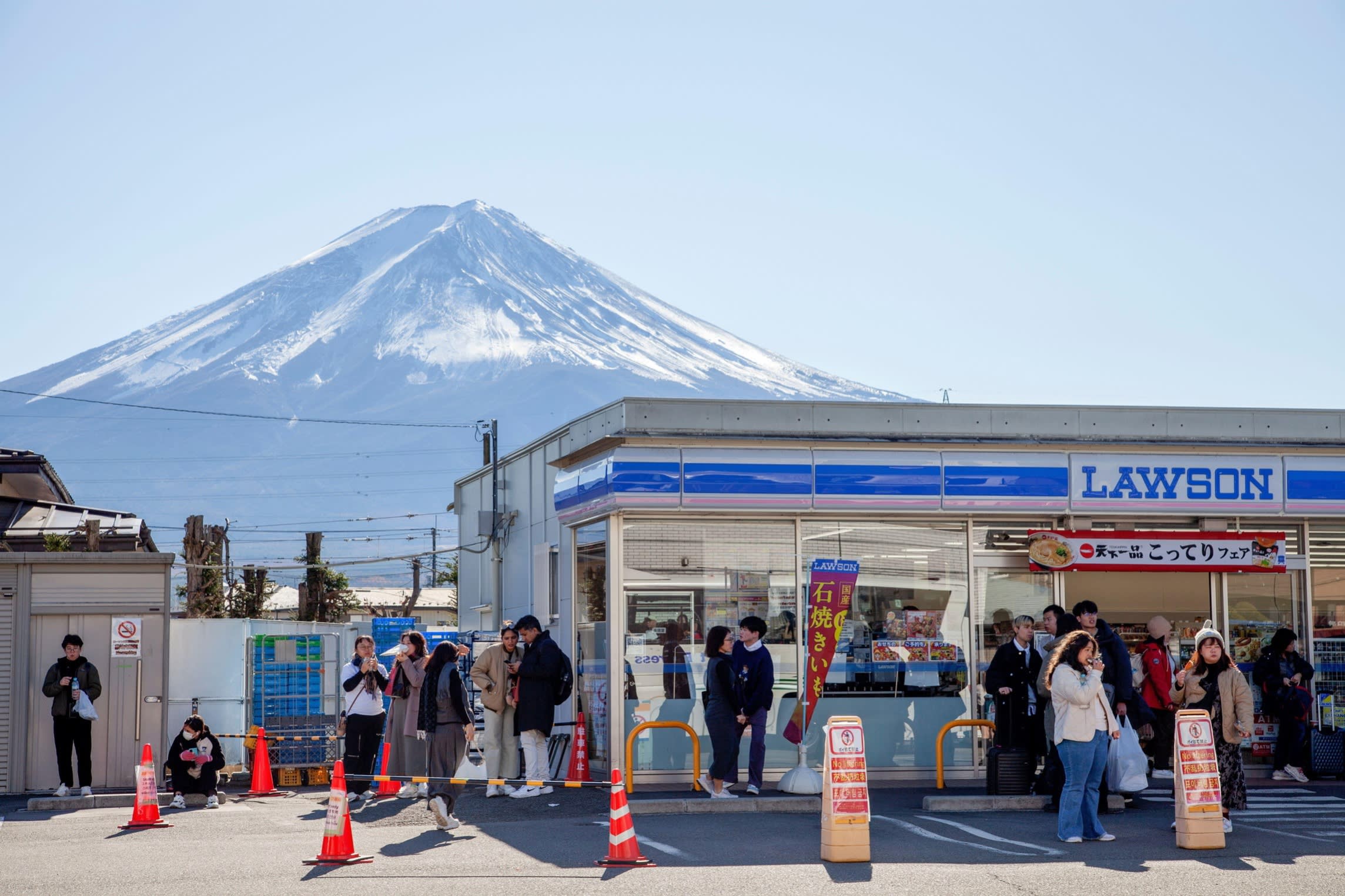During cherry blossom season this year, I finally heard the line that I had been half expecting for months. A Tokyo-ite in her early fifties telling an Australian couple in their thirties visiting Japan for the first time not to bother with Kyoto at this time of year.
Did she really mean Kyoto was skippable? Hard to tell. In her heart, of course not; but based on what she has seen on TV and heard from her pals in Kyoto itself, it makes sense. She helpfully suggested other, less crowded places while invoking stories of vista-ruining, matcha-ice-cream-slurping foreign masses spoiling the ancient capital. Overtourism, she concluded sadly, has caught Japan by surprise.
But that surprise feels increasingly confected. Bustling Japan undoubtedly is, but full to bursting it ain’t. And fretting about the potential downsides of your enchanting international popularity, when the recently lived alternative is so drab and the home-front demographics so dire, feels diva-ish.
There is something else behind this: an exquisite duel between the pride and pain of rampant Japanophilia. On the one hand, an unprecedented wave of foreigners is being welcomed warmly and lucratively (“OMG this place is amazing!”) to what the Japanese have always quietly known to be the greatest country on Earth. On the other, the economics by which that discovery (“Did we just pay $100 for the best sushi on the planet?”) have been rendered so attractive are more than a little humiliating.
The overtourism self-diagnosis is easy enough to understand, and has everything to do with the extreme speed and focus with which the symptoms have blistered on the national skin. Japan is big and insanely diverse in its tourism offerings, but the classic “golden route” of Tokyo-Kyoto-Osaka-Hiroshima concentrates almost all first-time visitors on a relatively small portion of this and weaponises the throngs by assuring everyone of a cheek-by-jowl experience. Because all this has happened so suddenly, there is a pernicious feeling of under-preparedness in a place that takes pride in preparation.

The sense of control, so long a feature of the way domestic tourism was conducted and developed for Japan’s coach-tour generations, has also been surrendered. Japan’s inbound tourism boom has unfolded as a phenomenon of the social media age, with all the unpredictability that brings. Japan is finding that challenging.
As a local tourist board, you might consider building the Fuji viewing platform so the mountain looms over a magnificent lake because millennia of aesthetic refinement tell you that’s right. TikTok, in its crowdsourced wisdom may meanwhile dictate the must-have shot sets Fuji against a convenience store. That actually happened outside Kawaguchiko station, and the authorities felt the need to build a screen to disperse the Instagram-hungry crowds. Japan has to pretend it is less thrilled at this mischief than it really is.
So the overtourism risk, such as it isn’t, lies in the immense crowds at many of Japan’s most iconic spots, nerdy congestion at places made famous in manga and anime, the inability to teach a Japanese code of manners honed from birth to millions of recent arrivals, price inflation and annoyance for locals, trains and restaurants full to the gunwales and instances of visitor cloddishness that are, in reality, isolated but which social media algorithms make appear ubiquitous.
For long years, though, these problems seemed improbable. From the late 1970s to about 2012, the annual number of foreign visitors to (reputationally expensive and inaccessible) Japan remained stolidly in the low single-digit millions. During the next couple of years — the first blush of the “Abenomics” era — the yen weakened significantly, visa restrictions on Chinese were loosened and Tokyo’s Haneda airport took on long-haul daytime flights. The effect was stunning.
In 2015, just shy of 20mn foreign tourists barrelled into Japan; by March the following year, an invigorated government set itself the target of doubling that by 2020. It might have got there too if Covid-19 had not scuppered everything and, critically, turned the Tokyo Olympics into a spectator-free wasted effort.
But the post pandemic tourist rebound (helped by an even weaker yen and huge recent influx from South Korea) has been more remarkable. In 2024, Japan’s record-breaking visitor tally was almost 37mn (compared with 68mn in Italy the same year); their collective spending hit an unprecedented Y8.1tn ($56.5bn) and the government raised its target to 60mn annual visitors by 2030 . . . all while designing pictograms to teach good manners to the barbarous and carefully formulating a strategy to push more visitors into the less trodden parts of the country.
Of those numbers, it’s the 37mn that most neatly encapsulates the discomfort of success for one of the world’s most acutely ageing and shrinking major economies. The number of foreign visitors to Japan last year was more or less exactly the number of Japanese now aged over 65 (now roughly a third of the total population), and almost three times bigger than Japan’s total population of under-15s. The inbound tourists are not just a flow along the gradient of economic and currency imbalance; there is a human vitality flooding in with the visitors that Japan knows all too well it was gradually losing.
To rub it in, only 13mn Japanese travelled abroad as tourists in 2024 — way off the 18mn average for the decade before Covid and another reminder of imbalance: the yen makes foreign trips too expensive, while the tourist-driven price rises at home are causing many Japanese to think twice about domestic travel.
But another, more cheerful reminder invoked by the tourism boom is that modern Japan was designed — and then honed — around the constant, progressively more sophisticated accommodation of epic crowding and population density.
So much of what makes Japan so engrossing — its architectural maximisation of limited space, its tightly interwoven public transport infrastructure, its automation, its miniaturisation, and so on — is the historic expression of a society that embraced the idea that on a mountainous archipelago, everyone wanted or needed to be in the same places at once. Nine of the world’s 10 busiest railway stations are in Japan, with trains run on the basis that a few seconds delay can render a platform dangerously crowded. This is a country that is at its best when improving management of congestion and innovating in service of the swarm.
Before the tourists really started to pile into Japan, and long years of economic stagnation were making their mark there was already a creeping sense that a national capacity built for growth had become visibly surplus to requirements. Suddenly, much of it feels gloriously wanted. Overtourism is years away; for now it is all opportunity.
Leo Lewis is the FT’s Tokyo bureau chief
Find out about our latest stories first — follow FT Weekend on Instagram, Bluesky and X, and sign up to receive the FT Weekend newsletter every Saturday morning


